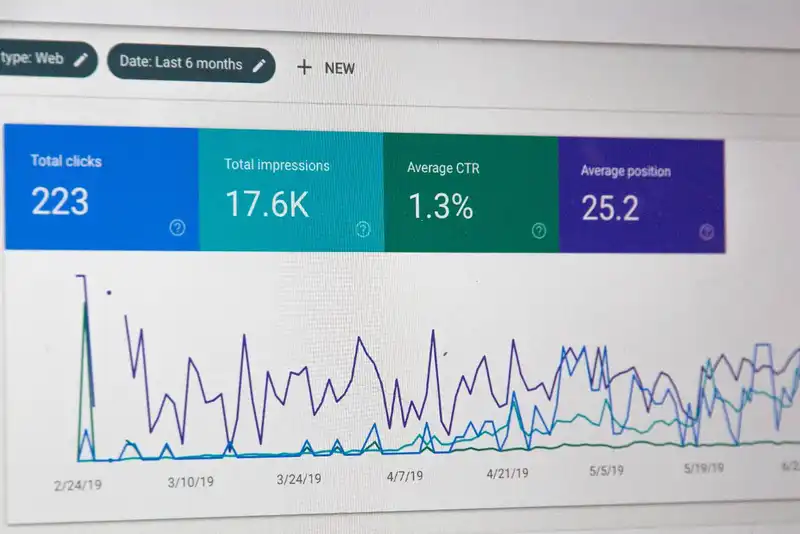What is Digital Analytics? Guide for Businesses
Introduction to Analytics Tools
Online marketing tactics are constantly evolving as consumers change their preferences with every technological advancement. Many e-commerce businesses are testing e-mail, content, and social media marketing strategy to determine which platform yields the best results with their specific model and target audience. In order to do this, organizations must have an established system that tracks the performance of a promotion.
Thanks to modern business intelligence, many companies are utilizing digital analytics to gather and develop big data from virtual customer interactions. With digital analytics, management can form actionable insights from processed information rather than manually working out raw digital data. This gives organizations the ability to improve their customer reach, service, and experience.
What Are Digital Analytics?

Digital analytics refers to the measurement and analysis of qualitative and quantitative data gathered online, specifically digital marketing channels. However, the majority of digital analytics revolves around quantifying various performances into metrics. This information provides insight into user behavior and engagement patterns. Analytics can be collected from user interactions, website visits, and online communications.
With digital analytics, businesses are able to define their strengths and weaknesses regarding customer reach and marketing. In broader terms, digital analytics provides performance metrics and valuable customer data that e-commerce companies can use to develop buyer personas.
For example, many online businesses use Google Analytics to track and measure an advertisement's performance so companies can determine which marketing method is more impactful.
This information allows businesses to enhance their customer experience and continuously improve various services. And in return, shoppers are more likely to make repeat purchasing, driving sales and retention rates.
What Are Web Analytics?

Digital analytics as a whole is an extensive term that covers multiple elements of a more specific type of analysis called web analytics. Web analytics explicitly measures audience data, such as interaction and buying behavior.
In other words, web analytics doesn't evaluate a business's performance directly but instead monitors how online users react to the website. This could include tracking how shoppers found the website, the most viewed page, and even how long they stay on the site. By collecting this information, it is easy to identify common pain points and areas of interest.
With web analytics data, organizations can focus on different services individually, such as optimizing the mobile user experience and changing the website's layout, so it's easier to navigate.
Digital and web analytics offer essential insights into what customers prefer, allowing e-commerce businesses to improve services and meet evolving demand.
How Business Intelligence Improves Data Analytics

Business intelligence (BI) is an even broader term that encapsulates the entirety of modern data science. BI is the service that orchestrates the transformation of raw data into actionable insights. Without BI, companies are left with large volumes of unstructured data that don't point to a conclusive answer.
For example, an organization can collect the visit length of all of its users in a day. However, without BI, they remain unaware of which pages attract the most shoppers and which have the least engagement. This means that they are unable to make data-based decisions to improve their performance.
With BI, companies can act immediately on the data they collect to improve their business strategies rather than sending the data to a developer and waiting for the report.
BI usually consists of sophisticated software composed of the company's existing platforms so it can pull data from every channel and system, such as inventory and customer relationship management. These solutions can generate details reports on historical and real-time data to paint a holistic picture of the organization's performance.
Before software, companies that wanted insights had to manually record data sets into a spreadsheet or send information to an analyzer, which required an extensive amount of time, resources, and brainpower. Now, businesses can use BI software to translate data as it is collected, eliminating downtime and guesswork.
Digital Analytics Metrics

Digital analytics metrics quantify different marketing efforts so companies can efficiently check which operations are on track to meeting specific goals. It can even help businesses with search engine optimization. There are numerous types of metrics that organizations can monitor based on their marketing approaches.
Digital Metrics for Websites
Digital metrics for websites cover the various statistics related to online activity and website interaction.
- Visitor
- Page View
- Session
- Traffic
- Traffic by Channel

- Traffic by Device
- Ratio of New to Returning Traffic
- Time on Page
- Interactions per Visit
- Bounce Rate
Digital Metrics for Lead Magnets

Digital metrics for lead magnets are statistics associated with content marketing performance.
- Call-to-Action Click-Through Rate
- Submissions
- Conversion Rate
- Free Trial Conversion Rate
- Pop-Up Conversions
- Ratio of Generated to Marketing-Qualified Leads
- Leads to Close Ratio
Digital Metrics for Email Marketing

Digital metrics for e-mail marketing reflect the performance of e-mail content marketing.
- Open Rate
- Opens by Device
- Click-Through Rate
- Bounce Rate
- Unsubscribe Rate
Digital Metrics for Content and Social Media

These digital metrics quantify the performance of a company's content and social media.
- Engagement Rate
- Follows and Subscribes
- Shares
Digital Metrics for Product and E-Commerce
E-commerce businesses also use digital metrics to evaluate the performance of their online presence and products.
- Shopping Cart Abandonment Rate
Benefits of Digital Analytics
Digital analytics gives businesses the power to objectively discern the performance of their various marketing tactics to define strengths and weaknesses. This makes it easier to improve online services so customers are satisfied and return to the organization.
Monitoring digital analytics also provides several other benefits that enable companies to continuously enhance their customer reach.
Measure Online Traffic
By measuring online traffic, businesses can determine the following.
- The average number of users that visit their website.
- Where visitors come from.
- What attracts visitors to the site.
- What users click on while on a page.
- The amount of time they spend on the website each visit.
This data allows management to see where the most conversions are coming from and how much it contributes to their customer acquisition and bottom line. For example, if a page shows that the majority of users were converted from a social media campaign, the organization may want to readjust resource allocation to promote these types of advertisements.
Online traffic measures also discern how many of the visitors were organic and how many were paid, enabling businesses to optimize their investments.
Find the Best Target Audience

It is impossible for a business to create a marketing campaign that will attract every demographic. Typically, there are numerous types of customers and each has its own unique set of preferences. Therefore, companies must define their target audience by studying their customer-
- Pain points
- Areas of interest
- Product preferences
- Reviews
- Demographic
By identifying each of these factors with analyses, marketing teams can finetune their analytics strategy to attract their target audience.
However, it is essential to remember that every organization has a unique target audience. Therefore, management must thoroughly define shoppers to differentiate them from the general consumer.
Monitor Business Goals
Every business has short- and long-term goals regarding customer retention, sales, and profits. However, it is challenging to determine the progression made toward these objectives without monitoring performance metrics.
With digital analytics, companies can track their goals and determine which systems drive and lag their progression. By carefully choosing what metrics to monitor, managers can also measure the impact and possibility of worst-case scenarios that could affect reaching various goals.
Create Unique Ideas
Analytics helps develop an overview of a company's performance, giving them the chance to look at operations through various perspectives. This can often spark new ideas on how to improve the customer experience.
For example, businesses may discover customer trends that show users prefer personalized content. This allows marketers to generate customized e-mails based on customer profiles to boost conversion and retention rates.





